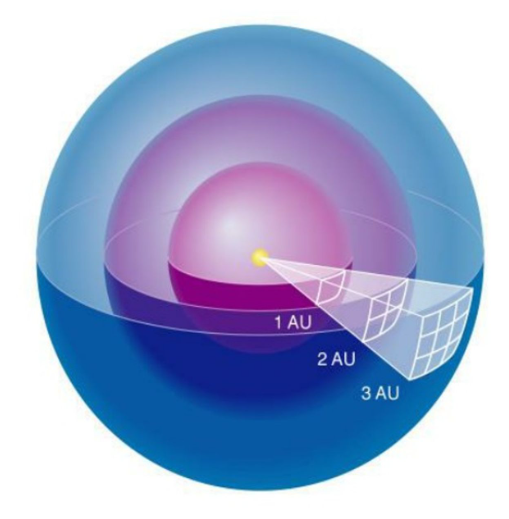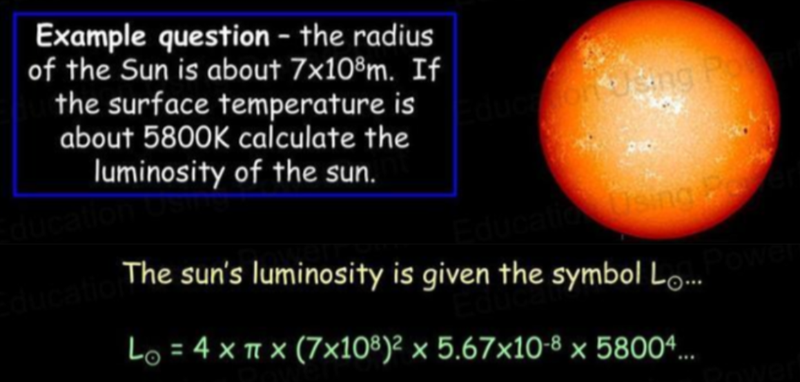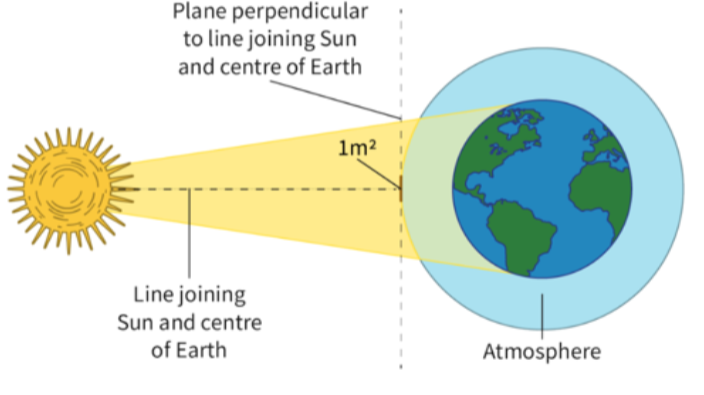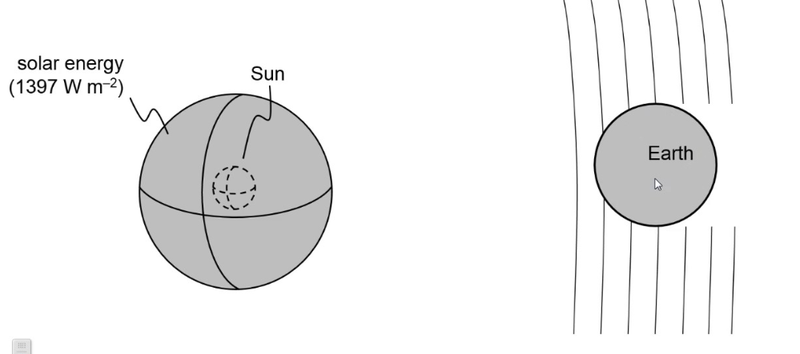- Stars can be considered as black bodies that emit light and thermal radiation.
- According to Wien's law, stars of different temperatures have different colors, with blue stars being the hottest and brown and red stars being the coolest.
Apparent Brightness
- Intensity is defined as power over area, and it used in wave calculations to determine how much energy is transferred to a certain area by a wave.
- This is also applicable for stars, whose light decreases the further we get away from one.
- Apparent brightness can thus be defined as the amount of power per square meter that arrives on the Earth.

- While intensity is often written as I, and apparent brightness as b, keep in mind that they are one and the same.
- Apparent brightness is simply another name for the intensity of the Sun on Earth.
- For intensity calculations involving stars, the luminosity is often used in place of power.

- Likewise, the surface area of a sphere, the radius of which is the distance from the star.
- This is because the radiation is assumed to spread as a sphere around the star (which can be thought of as a point source).

- Notice how the area at a distance is 9 times smaller than the area at 3 times the distance.
- Intensity decreases exponentially with distance, as can be seen from the formula.
Solar Constant
Luminosity of the Sun
- The luminosity of other stars is often given in terms of the luminosity of the sun, meaning it is important to know.

Definition of the Solar Constant
- The solar constant, given as S, is the amount of power arriving at the surface of Earth from the sun per unit area.

- The solar constant uses the luminosity of the sun, the formula for intensity, and the distance from the Earth to the sun.
- Putting all of the values together we calculate that the apparent brightness of the sun, S, is equal to:

- The solar constant uses the same units as intensity.
- However, the Earth doesn't actually receive all of the power from the sun that reaches it.
- This is because it is spherical, and only one side of it is lit.
- To understand better, try putting your hand under a light.
- As it receives energy from the light, the energy absorbed or reflected by your hand doesn't reach the surface below it, which leads to it casting a shadow.
- Your hand is a complicated 3-dimensional shape; yet the shadow is just a 2-dimensional shape.
- This must mean that the area receiving energy is just a 2-dimensional shape with the area of your hand's shadow!
- If we want to know what the average amount of energy incident per second per meter squared on the surface of the Earth is, we need to take into account that only one side of the Earth is exposed to the Sun's radiation at any one time and that the Earth is a sphere.
- Like the hand and its shadow, the Earth only presents a 2D surface to the sun with the area of its shadow, a circle!


Sources